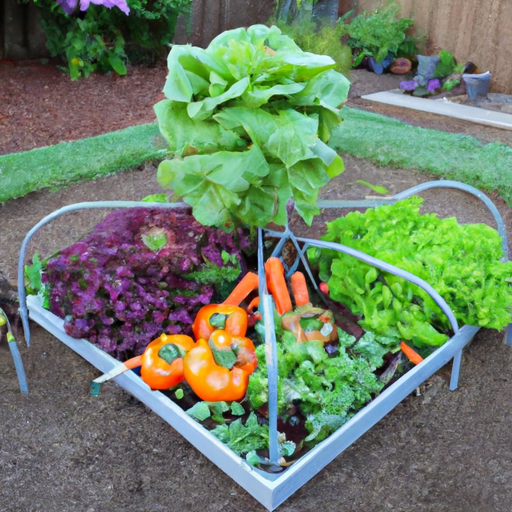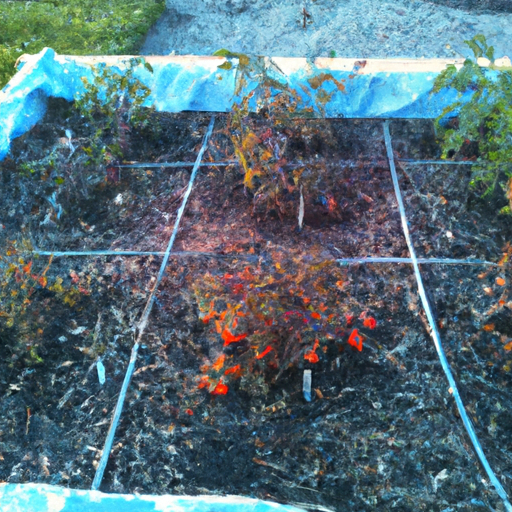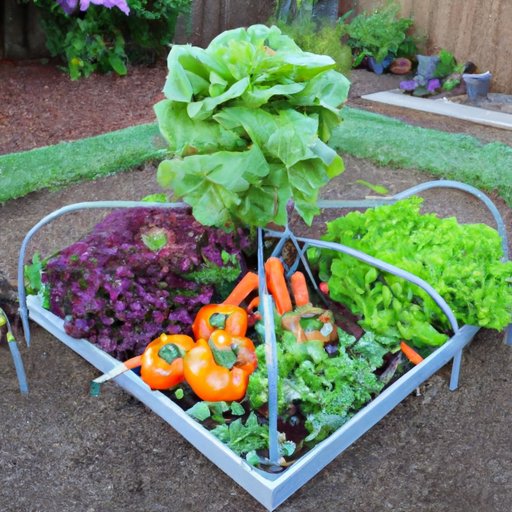Have you ever wondered what you would do if you had to live off the grid? Maybe you’re a fan of the show “Survivor” and have thought about what it would be like to rely solely on the land for your food. Well, I’ve got some interesting news for you – there are actually quite a few food options that can be grown underground! In this article, we’re going to discuss five of these underground crops that could be a great option for off-grid living. So, if you’re curious about what you could grow underground to sustain yourself, keep reading!
When it comes to living off the grid, self-sustainability is key. And what better way to ensure a steady food supply than by growing your own crops? The good news is that there are plenty of options for foods that can be grown underground. Think about it – potatoes, carrots, radishes, onions – these are all examples of crops that thrive beneath the earth’s surface. Not only are these foods relatively easy to grow, but they also provide essential nutrients and can be stored for long periods of time. In this article, we’re going to dive into the details of these five underground crops and how they can be grown successfully off the grid. So, if you’re ready to learn more about living off the land, let’s get started!

Introduction
Living off-grid has become an increasingly popular lifestyle choice for individuals seeking self-sustainability and a lower environmental impact. It involves relying on renewable energy sources, minimizing waste, and growing your own food. One key aspect of off-grid living is underground growing, which allows individuals to utilize limited space efficiently and protect crops from extreme weather conditions. In this article, we will explore the benefits of underground growing and discuss five delicious food options that can be grown underground.
Benefits of Underground Growing
Utilizing limited space
One of the major advantages of underground growing is its ability to maximize limited space. Instead of relying solely on traditional gardens, which require a large amount of space, underground growing makes use of vertical space. With the right techniques and equipment, you can create a thriving underground garden even in a small area.
Protection from extreme weather
Another significant benefit of underground growing is the protection it provides from extreme weather conditions. While above-ground gardens are susceptible to frost, excessive heat, and heavy rains, underground gardens remain relatively unaffected. The stable temperature and natural insulation provided by the surrounding earth create a more favorable environment for plant growth.
Reduced water consumption
Water scarcity is a global concern, and underground growing can help address this issue. Underground gardens require significantly less water compared to traditional gardens. The soil in underground gardens retains moisture for longer periods, reducing the frequency of watering. Additionally, as the plants are sheltered from direct sunlight, they lose less water through evaporation.
1. Potatoes
Nutritional value of potatoes
Potatoes are a versatile and nutritious vegetable, making them an excellent option for underground growing. They are a rich source of vitamins and minerals, including vitamin C, vitamin B6, and potassium. Potatoes also provide dietary fiber, which aids in digestion and promotes a healthy gut.
Different types of potatoes to grow underground
When selecting potatoes for underground growing, consider varieties that perform well in this environment. Some popular options include Yukon Gold, Fingerling, and Kennebec potatoes. These varieties are known for their ability to flourish in underground conditions and produce high yields.

2. Carrots
Health benefits of carrots
Carrots are not only delicious but also packed with nutritional benefits. They are an excellent source of beta-carotene, which the body converts into vitamin A. Carrots also contain antioxidants that support immune function and promote good vision. Additionally, they are low in calories and high in dietary fiber, making them a great addition to a healthy diet.
Ideal conditions for growing carrots underground
Carrots thrive in loose, well-draining soil. To create an ideal underground environment for carrots, ensure the soil is loose and free of rocks and debris. Carrots also require consistent moisture, so it’s essential to water them regularly. A deep container or raised bed with loose soil will provide adequate space for carrot roots to grow long and straight.
3. Radishes
Fast-growing underground vegetable
If you’re looking for a vegetable that grows quickly and requires minimal maintenance, radishes are an excellent choice. They are fast-growing, often ready for harvest within a month of planting. This makes radishes a perfect option for those who want to see results quickly and enjoy fresh produce in a short amount of time.
Varieties of radishes to consider
Radishes come in various shapes, sizes, and colors, each offering a unique flavor. Some popular options for underground growing include French Breakfast, Cherry Belle, and Black Spanish radishes. Experimenting with different radish varieties can add excitement and diversity to your underground garden.
4. Onions
Versatile underground crop
Onions are a staple ingredient in many dishes and can be grown successfully underground. They provide a bold flavor and a host of health benefits. Onions are known for their antibacterial properties and their ability to support heart health. They are also a good source of vitamin C and dietary fiber, making them a nutritious addition to your diet.
Essential tips for successful onion growing
Onions thrive in well-draining soil with plenty of organic matter. It’s important to prepare the soil adequately before planting onion bulbs underground. Onions prefer cool weather, so it’s recommended to plant them in early spring or late fall. Regular weeding and adequate spacing between bulbs will help ensure healthy growth and high yields.
5. Garlic
Medicinal properties of garlic
Garlic is not only delicious but also offers numerous health benefits. It has been used for centuries as a natural remedy for various ailments. Garlic contains a compound called allicin, which has antimicrobial and immune-boosting properties. Regular consumption of garlic can help lower blood pressure, reduce cholesterol levels, and support overall cardiovascular health.
Steps to cultivate garlic underground
To grow garlic underground, start by selecting high-quality garlic bulbs. Separate the cloves and plant them in well-draining soil, pointed end up. Garlic requires a period of cold temperatures for optimal growth, so plant it in late fall or early winter. With proper care and regular watering, you can harvest fresh garlic bulbs in late spring or summer.
Tips for Successful Underground Growing
Choosing the right soil
The soil composition is crucial for successful underground growing. Ensure that the soil is rich in organic matter and has good drainage. Avoid heavy clay soils that can become compacted and hinder root growth. Regularly adding compost and other organic amendments will help maintain the quality of the soil.
Providing adequate drainage
Proper drainage is essential to prevent waterlogging and root rot. If your underground garden is in a basement or an enclosed space, make sure there is a drainage system in place. This can be achieved by using raised beds or containers with drainage holes. Regularly inspect the drainage system to ensure it is functioning effectively.
Controlling pests and diseases
While underground gardens are less prone to pests and diseases compared to traditional gardens, it’s important to remain vigilant. Inspect your plants regularly for signs of pests or diseases and take appropriate action if necessary. You can also incorporate natural pest deterrents, such as companion planting or introducing beneficial insects, to protect your crops.
Potential Challenges of Underground Growing
Limited sunlight exposure
One of the main challenges of underground growing is limited sunlight exposure. Plants require sunlight for photosynthesis, which is crucial for their growth and development. To overcome this challenge, consider using artificial lighting sources, such as LED grow lights, to supplement natural sunlight. Place the lights strategically to ensure proper coverage and intensity for the plants.
Maintaining optimal temperature and humidity
Underground environments tend to have more stable temperatures compared to above-ground gardens. However, it’s important to monitor and control the temperature and humidity levels in your underground garden. Install a temperature and humidity gauge to track the conditions. If necessary, use fans or ventilation systems to regulate airflow and prevent excessive moisture buildup.
Conclusion
Embracing off-grid living with underground growing offers numerous benefits, including efficient space utilization, protection from extreme weather conditions, and reduced water consumption. By growing crops underground, particularly potatoes, carrots, radishes, onions, and garlic, you can have a diverse array of fresh and nutritious produce at your fingertips. With the right soil, drainage, and pest control measures, you can overcome the challenges and enjoy the rewards of self-sustainability and a thriving underground garden. So, start digging and explore the possibilities of underground growing for a sustainable and fulfilling off-grid lifestyle.




